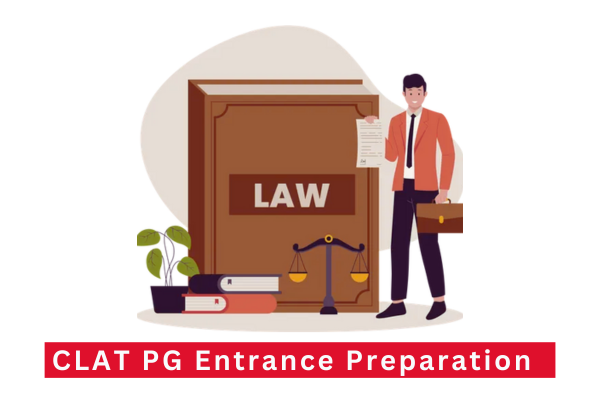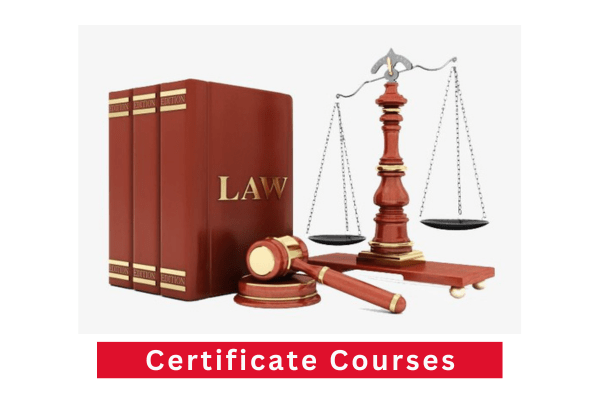
Important Landmark Judgement For CLAT PG 2025 Preparation
The CLAT PG exam is a gateway for students aiming to pursue higher studies in law at top NLUs. To excel in this exam, it is crucial to thoroughly prepare all the topics included, with a special focus on landmark judgments. Understanding the profound effects and reasoning behind these judgments is essential for qualifying with excellent scores. In this comprehensive guide, we will explore the best approach to prepare for important landmark judgement questions for CLAT PG 2025. We will provide tips for identifying important recent judgments, a curated list of landmark Supreme Court judgments, analysis of past year trends, and sample questions to help you ace the exam.
How to Identify Important Recent Judgments for CLAT PG 2025?
Thousands of judgments are filed each year, making it essential to identify the most relevant ones for the CLAT PG 2025 exam. Here are some tips to help you navigate through the vast pool of judgments:
- Focus on Relevance: Not every recent judgment is important. It is crucial to identify the judgments that are directly connected to the syllabus and important subjects, such as constitutional law, family law, and criminal law.
- Consider Bench Size: Generally, constitution bench judgments of three or more benches are more significant. Single or two bench judgments are rarely of utmost importance, with a few exceptions.
- Examine Syllabus Relationship: Recent judgments related to subjects mentioned in the syllabus hold more significance as they are directly connected to the exam. For instance, understanding Constitutional law judgments is crucial.
- Exclude Irrelevant Topics: Certain topics like arbitration law and CPC are not essentially part of the syllabus. Therefore, judgments related to these topics are unlikely to appear in the exam.
- Seek Guidance: Take help from mentors, friends, or reliable study materials to save time while preparing this section.
List of Landmark Judgements for CLAT PG 2025
To enhance your CLAT PG preparation, it is crucial to focus on a curated list of landmark Supreme Court judgments that are essential for understanding the Indian Constitution. These judgments have significantly impacted our country's legal landscape. Here are some of the important landmark judgments:
- Ahmed Khan v. Shah Bano Begum (1985): This judgment extended Section 125 of the Criminal Procedure Code to provide maintenance to a divorced Muslim woman.
- C. Mehta v Union of India (1986): This judgment laid down the principle of absolute liability, holding industries strictly liable for environmental damage.
- Mohini Jain v State of Karnataka (1992): This judgment laid down that the right to education is an integral part of the right to life.
- Indira Sawhney v Union of India (1992): This judgment upheld the implementation of the recommendations of the Mandal Commission Report and defined the "creamy layer" concept in relation to reservations.
- R. Bommai v Union of India (1994): This judgment laid down guidelines to prevent the misuse of Article 356 (related to the President's rule) of the Constitution.
- Rajgopal v State of Tamil Nadu (1994): This judgment laid down that the right to privacy is implicit in the right to life and liberty guaranteed by Article 21 of the Constitution.
- Sarla Mudgal v Union of India (1995): This judgment laid down principles against the practice of solemnizing second marriage by conversion to Islam without dissolving the first marriage. It highlighted the need for a uniform civil code.
- Vishakha v State of Rajasthan (1997): This judgment laid down the basic definitions of sexual harassment at the workplace and formulated the Vishakha guidelines to deal with such harassment.
- Samatha v State of Andhra Pradesh (1997): This judgment stated that government land, tribal land, and forest land in scheduled areas could not be leased to non-tribals or private companies for mining or industrial operations.
- Chairman, Railway Board v. Chandrima Das (2000): This judgment laid down that the right to life is also available to non-citizens of India who visit India for tourism or otherwise.
- A. Inamdar v State of Maharashtra (2005): This judgment clarified that the policy of reservation cannot be enforced by the state in private educational institutions.
- Om Prakash v Dil Bahar (2005): This judgment held that a rape accused could be convicted solely on the evidence of the victim, even if medical evidence does not prove rape.
- Trimex International Ltd v Vedanta Aluminium Ltd (2010): This judgment clarified that once a contract is concluded orally or in writing, the absence of a formal contract does not affect the acceptance or implementation of the agreement.
- Aruna Ramchandra Shanbaug v Union of India (2011): This judgment issued guidelines for allowing passive euthanasia.
- Lily Thomas v Union of India (2013): This judgment ruled that any Member of Parliament, Member of the Legislative Assembly, or Member of a Legislative Council convicted of a crime with a sentence exceeding two years will be disqualified as an elected representative.
- People's Union for Civil Liberties v Union of India (2013): This judgment directed the Election Commission to introduce the "None of the above" option on EVMs and ballot papers, allowing people to register a negative vote in elections.
- Supreme Court Advocates on Record v Union of India (2015): This judgment struck down the National Judicial Appointment Commission Act and 99th Constitutional Amendment as unconstitutional and void.
- NALSA v. Union of India: This landmark judgment affirmed the constitutional rights and freedom of transgender individuals and recognized them as the third gender.
- Shreya Singhal v. Union of India: This judgment struck down Section 66A of the Information Technology Act, which violated freedom of speech and expression, declaring it unconstitutional.
These landmark judgments have shaped the legal landscape of India and are crucial for understanding the Indian Constitution.
Analysis of Past Year Trends in CLAT PG Landmark Judgments
Analyzing previous year trends in CLAT PG exams can provide valuable insights into the types of landmark judgement questions that may be asked in the future. Here are some observations from past year trends:
- Prevalence of Classic Cases Over Recent Ones: Previous papers indicate a higher inclination towards asking about landmark judgments that have stood the test of time rather than recent rulings. For example, seminal cases like Kesavananda Bharati v. State of Kerala are often favored over more contemporary ones.
- Variation in Question Types: CLAT PG papers have shown a mix of straightforward questions requiring direct recall of facts and more nuanced ones that require the application of legal principles. It is important to be prepared for both types of questions.
- Diverse Difficulty Levels: The difficulty spectrum of landmark judgement questions varies, ranging from easy definitional questions to challenging ones that require in-depth analysis. Understanding the intricate legal implications of judgments is crucial for answering such questions.
- Shift from Contemporary Issues: There has been a noticeable shift from current legal happenings to a focus on historical and foundational legal cases and principles. While current affairs are important, a robust understanding of landmark cases is indispensable.
- Emphasis on Core Legal Principles: The pattern underscores the need for a solid grasp of basic legal concepts, as many questions are framed around the application of these principles. For example, questions might center on the application of the basic structure doctrine established in the landmark case of Keshavananda Bharati v. State of Kerala.
- Broad Spectrum of Legal Domains: Questions span a wide range of legal fields, suggesting a comprehensive approach to studying. It is important to have a holistic understanding of different legal domains to tackle various types of questions.
- Strategic Selection of Topics: Some topics are perennial favorites in the CLAT PG exam, indicating the necessity for aspirants to pay special attention to them. For example, the principle of the "basic structure" of the Constitution has been a recurring theme, and questions related to the landmark case that established this principle are often included.
By analyzing past year trends, candidates can gain insights into the types of questions that may be asked in the CLAT PG exam and tailor their preparation accordingly.
Sample Questions Based on Landmark Judgement for CLAT PG 2025
To help you understand the type of landmark judgement questions that may be asked in the CLAT PG 2025 exam, here are some sample questions:
Question1: In which landmark case does the Supreme Court hold that the second marriage of a Hindu man is invalid even if he converts to Islam before marriage?
Question 2: In which landmark case does the Supreme Court of India hold that the power of judicial review vested in the High Court under Art.226 and the right to move the Supreme Court under Art.32 is an integral and essential feature of the Constitution?
Question 3: In which landmark legal case were fundamental rights considered inviolable parts of the Indian Constitution?
Question 4: In which landmark legal case was it held that Parliament has the right to amend the Fundamental Rights enshrined in the Constitution?
Question 5: In which landmark legal case was it held that the preamble is not a part of the Indian Constitution?
These sample questions provide a glimpse of the type of landmark judgement questions that may be asked in the CLAT PG 2025 exam. It is crucial to familiarize yourself with landmark judgments and their significance to excel in the exam.
Conclusion
Thoroughly preparing for landmark judgement questions is essential for success in the CLAT PG 2025 exam. By following the tips provided, focusing on the curated list of landmark judgments, analyzing past year trends, and practicing sample questions, you can enhance your preparation and boost your chances of achieving an excellent score. Remember to stay updated with the latest developments in the legal field by following Legalstix Law School for the latest updates. Embrace the opportunity to delve into the rich legal landscape of India and showcase your knowledge in the CLAT PG exam. Good luck!
Checkout our Upcoming Course on All in One LLM Entrance Exam Preparation


.png)




.png)
